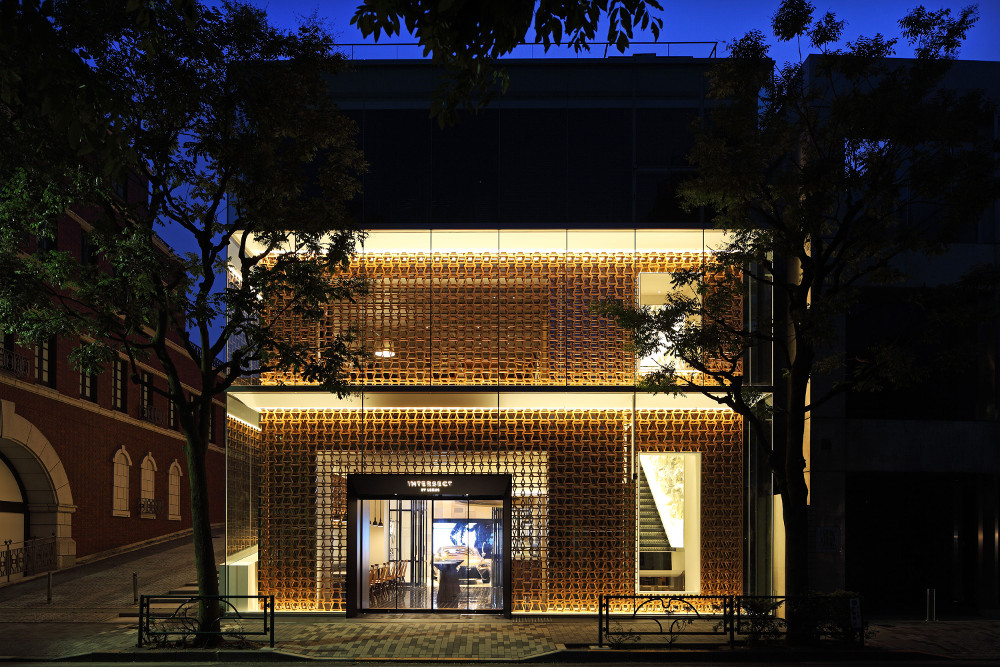
Lexus, Audi and BMW are reinvigorating the traditional showroom model, to bring luxury consumers innovative retail experiences in key global shopping destinations
BMW’s George V “Brand Store”
Lexus, Audi and BMW are reinvigorating the traditional showroom model, to bring luxury consumers innovative retail experiences in key global shopping destinations
In the information age, consumers no longer buy products, they experience brands. Whilst this has arguably always been a cornerstone of luxury marketing, even luxury brands themselves are elevating experiential offerings to differentiate from competitors in a marketplace flooded with choice.
Digital technology has forced the industry to rethink conventional retail, underscored by skyrocketing real estate costs and the increased sophistication of eCommerce. Consumers now look to the internet to find information that, previously, would have forced them to go into a store, as the online experience optimises the delivery of complex information.
Naturally, the square-metre heavy showroom model for luxury automobiles has become ripe for reinvigoration. Particularly when you consider that the world’s ultra high net worth (UHNW) individuals tend to be installed in densely populated cities like New York, London or Hong Kong, where central real estate comes at an extreme premium.
“ The square-metre heavy showroom model for luxury automobiles is ripe for reinvigoration ”
And then there is the shift in wealth from the west to the east (and the south). As the UHNW population rises in the Middle East, Southeast Asia, Brazil and India, luxury brands are not necessarily established to cater to emerging demand, outside third-party distribution.
And when attempting to penetrate markets as geographically spread as those of Russia and China, in many cases a gleaming showroom in one or two first-tier cities is insufficient to spread the word.
Then we need to take into consideration how mobile the ultra-wealthy have become; ‘homeless with 20 homes’ as described by a Richemont executive. These UHNW individuals – a prime target for luxury automotive brands that often collect vehicles – are not necessarily experiencing luxury brands in home markets, as they flit between key financial and business cities across the world.
So what’s a brand to do? The luxury car industry has not adopted eCommerce as quickly as other luxury sectors for many obvious reasons. Expansive showrooms are expensive, and local legislation and import taxes in emerging markets are proving to be significant barriers to entry.

Intersect by Lexus in Aoyama, Tokyo
Instead brands such as BMW, Audi and Lexus are thinking much more creatively about retail spaces that inspire consumers to come and interact with their brand, which has less and less to do with showcasing vehicles. They are choosing cities such as London, Paris and Tokyo to build interactive digitally-enabled ‘destinations’ to provide locals and travellers direct brand experiences.
Lexus recently opened ‘Intersect By Lexus’ in Tokyo’s Aoyama district, perhaps better known for housing the flagships of fashion brands such as Thom Browne, Marc Jacobs and Alexander Wang.
The Tokyo space comprises of a café serving ‘world-renowned’ coffee, and what Lexus calls a Garage, which is a space for exhibiting car culture and lifestyles. The Lexus store comprises items produced by "brands that harmonize with Lexus’ philosophies”, alongside a library lounge serving modern-Japanese cuisine. New York and Dubai are set to open next.
“ Clients can use hand gestures to interact with the car, exploring every angle & detail in high resolution ”
Audi chose Mayfair to launch Audi City, a new digital car showroom format that uses state-of-the-art technology to make clever use of precious city space. According to the brand, visitors can experience every possible combination of the Audi range in a way never seen before in an Audi Centre.
The digital environment features multi-touch displays for configuring an Audi vehicle from millions of possible combinations. Once personalised, the car is displayed in photorealistic 3D using real-time render technology, projected onto one of the floor-to-ceiling digital “powerwalls” to visualise the car configuration in life-size scale.
From here, clients can use hand gestures to interact with the car, exploring every angle and detail in high resolution using Kinect technology (Razorfish).

Audi City in London’s Mayfair
And then there is BMW George V, a stones throw from Paris’s famed Champs-Elysées, nestled between Louis Vuitton and the Four Seasons. BMW’s first “Brand Store” is the beginning of a comprehensive programme at the BMW Group which the company refers to as “Future Retail”.
The 800sqm flagship was designed by luxury retail architect Eric Carlson, and features Product Geniuses (à la Apple), alongside enhanced integration with the brand’s online presence, social media activities and virtual product presentation.
With Future Retail, the BMW Group has three objectives – first, to increase the number of possible contact points with customers and prospects, second, to increase the services and benefits offered in its retail channels, and third, to enhance the retail experience at all touch points. And according to CEO Ian Robertson, “to be the benchmark in automotive retail.”
As retail rents continue to rise, in the world’s most important cities for UHNW individuals, we can only expect further innovation in the retail of luxury automobiles.
To further investigate the retail experience on Luxury Society, we invite your to explore the related materials as follows:
- The New Shopping Experience Should Be Seamless
- Luxury Retail: Big Data is Watching
- Omni-Channel Retail: A Roadmap to Execution

